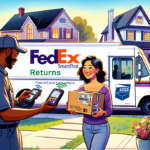7 Hacks for Bootstrapping a Successful Trade Show
Trade shows offer a unique platform for businesses to connect with potential customers, generate leads, and showcase their products or services. However, participating in trade shows can be costly and time-consuming, posing challenges for businesses with limited resources. With strategic planning and the right approaches, you can create a successful trade show experience without overspending. Here are seven hacks to help you maximize your return on investment.
1. Select the Right Trade Show for Your Business
Understand Your Target Audience and Industry
Choosing the right trade show is crucial for success. Ensure the event aligns with your target audience and industry. Research various trade shows to determine which ones offer the most exposure to your ideal customers.
Evaluate Location and Timing
Consider the location of the trade show to ensure it attracts your target demographic. For instance, if your audience is region-specific, attending a local event might be more beneficial than a national one. Additionally, check the event's timing to avoid clashes with major holidays or industry events.
Assess Costs and Benefits
Weigh the tangible and intangible benefits against the costs. Larger events may offer more visibility but come with higher expenses. Smaller, niche trade shows might provide more targeted leads at a lower cost. According to Statista, targeted trade shows can yield a higher conversion rate compared to broader events.
2. Design an Eye-Catching Booth on a Budget
Utilize Cost-Effective Materials
Creating a visually appealing booth doesn't require a hefty budget. Use affordable materials like fabric backdrops, colorful posters, and banners to make your booth stand out. Strategic lighting and creative product displays can also enhance visual appeal.
Incorporate Interactive Elements
Engage attendees with interactive features such as games, live demonstrations, or photo booths. Interactive elements not only attract visitors but also create memorable experiences that increase brand recall.
Partner with Other Exhibitors
Consider collaborating with complementary businesses to share booth space and costs. This partnership can also lead to cross-promotion opportunities and broaden your reach within the trade show.
3. Maximize Networking Opportunities
Engage with Attendees and Exhibitors
Trade shows are prime opportunities to build relationships. Develop a strategy to engage with both attendees and other exhibitors. Hosting a giveaway or providing interactive demonstrations can draw people to your booth and facilitate meaningful interactions.
Attend Seminars and Workshops
Participate in educational sessions to gain insights into industry trends and best practices. These sessions also offer networking opportunities with professionals who share similar interests. According to Inc., effective networking at trade shows can lead to significant business growth.
4. Leverage Social Media for Promotion
Create Buzz Before the Event
Use social media platforms to promote your participation in the trade show. Share sneak peeks of your booth design, run pre-event promotions, and announce your presence to generate interest.
Engage During and After the Event
During the trade show, post real-time updates and engage with attendees online. Use event-specific hashtags to increase visibility. After the event, share highlights and follow up with leads to maintain engagement.
Utilize Live Streaming
Live stream your booth activities or product demonstrations to reach a broader audience. This approach allows those unable to attend in person to engage with your brand. Promote the live stream in advance to maximize viewership.
5. Prepare Effective Sales Pitches and Marketing Materials
Tailor Your Message to the Audience
Your sales pitch should resonate with the event's attendees. Highlight how your products or services address their specific needs and pain points.
Design Informative Marketing Materials
Ensure your brochures, flyers, and business cards are well-designed, informative, and easy to understand. Offering free samples or trial periods can entice attendees to engage further with your brand.
Highlight Your Unique Selling Points
Research your competitors and identify what sets your brand apart. Emphasize these unique selling points in your marketing materials to distinguish yourself from the competition.
6. Generate and Follow Up on Leads
Track and Prioritize Leads
During the trade show, systematically track all leads and prioritize those showing the most interest. Use lead generation tools or mobile apps to collect contact information efficiently.
Personalize Follow-Up Communications
After the event, send personalized follow-up emails or make phone calls to nurture relationships with potential customers. Providing additional information or resources based on your conversations can enhance engagement.
Use CRM Tools for Management
Implement Customer Relationship Management (CRM) tools to manage and track leads effectively. This approach ensures no potential customer falls through the cracks and helps in analyzing the effectiveness of your trade show participation.
7. Measure ROI and Adjust Strategies
Track Costs and Outcomes
Calculate your total investment in the trade show, including booth design, travel, and marketing expenses. Compare this against the leads generated and the business opportunities secured.
Analyze Data for Insights
Use analytics to assess which strategies were most effective. Identify what worked well and what didn’t to make informed decisions for future events. Tools like Salesforce CRM can provide valuable insights into your trade show performance.
Optimize Future Trade Show Participation
Based on your analysis, refine your approach for future trade shows. This might include adjusting your booth design, changing your pitch, or targeting different events to improve your return on investment.
By implementing these seven hacks, you can create a memorable and impactful trade show experience that drives business growth and fosters valuable relationships. Prioritize your goals, plan meticulously, and remain adaptable to maximize your success in the competitive trade show environment.




















